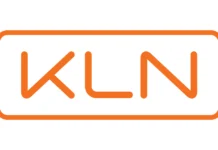Drug development is entering an era of radical transformation as pharmaceutical companies embrace virtual trials and in silico methodologies to reimagine the clinical research process. These digital-first strategies tap into computational models, artificial intelligence, and patient-specific simulations to address longstanding challenges—high costs, long timelines, patient safety risks, and regulatory complexity. The result is a new paradigm where virtual trials in pharmaceutical development become not just a supplement but a game-changing alternative to traditional clinical research, offering unprecedented speed, scalability, and precision.
In recent years, the regulatory climate has grown increasingly supportive of in silico trials, especially in specific contexts where predictive accuracy and data-driven decision-making can be rigorously demonstrated. Agencies like the FDA now accept modeling and simulation outcomes for dose selection, bridging studies, and even as part of end-to-end approval pathways. A robust digital infrastructure and sophisticated drug development simulation tools empower pharmaceutical companies to explore more adaptive, ethical, and efficient ways of bringing new molecules to patients, which is especially critical for rare diseases or precision therapies.
The Mechanisms and Impact of In Silico Trials
AI-Driven Design and Virtual Patient Cohorts
Virtual trials leverage physiologically based pharmacokinetic (PBPK) modeling and quantitative systems pharmacology (QSP) to create cohorts of virtual patients with real-world diversity and variability. Generative adversarial networks (GANs) and large language models (LLMs) synthesize demographic, genetic, and phenotypic data to build lifelike, synthetic populations. These virtual patient models allow pharmaceutical researchers to simulate drug absorption, distribution, metabolism, and excretion across thousands of personalized scenarios.
Using such tools, AI clinical trial design can now optimize protocols, refine endpoints, and select biomarkers based on more robust predictive analytics. Machine learning models simulate dose-response relationships, uncover population subgroups most likely to benefit, and flag adverse risk before enrolling actual patients. The methodology reduces the need for animal studies, supports ethical considerations around patient safety, and helps prioritize molecules for further development, avoiding costly failures in later-stage trials.
Adaptive Trial Protocols and Synthetic Control Arms
One emerging application is the use of virtual control arms—synthetic populations constructed using historical data and machine learning. These arms minimize the need for large placebo groups in targeted indications, improving statistical power and shortening trial timelines. The FDA and EMA have already accepted in silico evidence for pivotal studies, including rare indications where traditional recruitment is severely constrained.
Drug development simulation platforms also enable adaptive trial protocols, a methodology where AI and digital twins of patient cohorts can suggest mid-trial alterations, such as dose adjustments or eligibility criteria. This closed-loop modeling delivers more agile, responsive studies and boosts the overall probability of technical and regulatory success.
Infographic: The Four Pillars of Virtual Trial Success
- Data Diversity and Synthetic Cohort Construction (GANs/LLMs)
- AI-Powered Protocol Optimization (ML/QSP/PBPK)
- Scenario Simulation and Adaptive Intelligence (Digital twins/operational risk modeling)
- Regulatory Acceptance and Infrastructure (RWD/MIDD/fit-for-purpose data management)
Operational and Commercial Benefits
The shift to virtual trials in pharmaceutical development delivers remarkable efficiencies: – Protocol design can be iterated hundreds of times in silico at a fraction of the cost and risk of clinical trial amendments. Leading pharma innovators report up to 60% reductions in protocol complexity and 40% faster trial setup times. – Recruitment bottlenecks are alleviated by simulating and stratifying cohorts to reflect population diversity. Real-world data (RWD) helps fine-tune participant selection and predict site enrollment performance, making studies more inclusive and effective. – Patient stratification enables adaptive study arms, focusing resources on those most likely to respond or at risk for adverse outcomes. – Regulatory tech platforms support transparent reporting and cross-validation, enhancing confidence among regulators and payers.
In Silico Trial Use Cases Across Drug Development
| Drug Development Stage | In Silico Use Cases | Examples (2024-2025) |
| Preclinical | PBPK/QSP modeling, toxicity screening | Roche neural ODEs, dose selection |
| Early Development | Digital twin patient cohorts, biomarker optimization | AstraZeneca PCSK9 Phase 2 acceleration |
| Registrational | Synthetic control arms, operational scenario modeling | Pfizer tofacitinib bridging study |
Challenges and the Road Ahead
While adoption accelerates, several hurdles remain: model validation, quality of input data, organizational change, and building the necessary AI-ready infrastructure. Stakeholders must invest in training interdisciplinary teams, creating FAIR data pipelines, and collaborating with ex-pharma data and technology partners. Strategic pilots coupled with real regulatory feedback will help scale the impact of virtual clinical testing, especially as quantum computing and generative AI platforms become more powerful.
Virtual trials in pharmaceutical development are ushering in an era where real-world evidence, predictive modeling, and digital simulation converge to optimize every phase of drug development for speed, safety, and success. The future is not fully virtual—yet—but the velocity of innovation means every forward-thinking pharmaceutical brand should be charting its digital roadmap now.




















